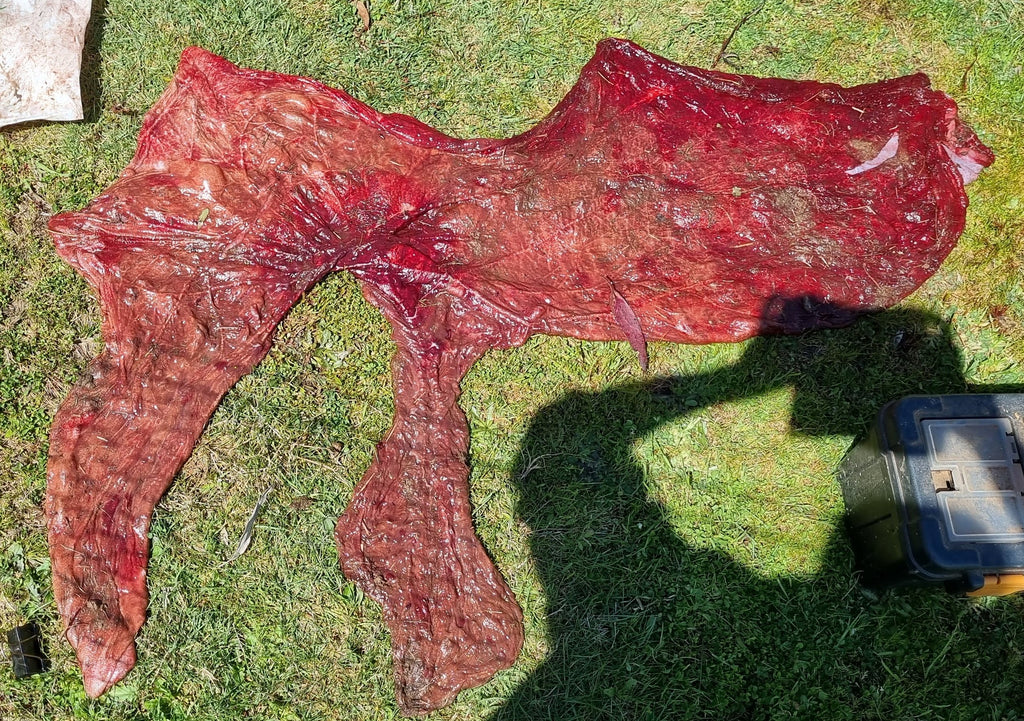The full document on placenta assessment, including pictures, is available here: Placenta assessment PDF
----------------------------------------------------------------------------------------------------------
After foaling and the passing of your mare’s placenta, the placenta should be checked for completeness and tears. If any placenta remains in the uterus, infection may occur or worse.
- Lay out in an F shape.
- Examine the placenta from both sides. It will present in-side out. Examine that side and then turn in the right way.
- The uterus has two horns. The pregnant horn will be longer, thicker and have slightly more fluid. The non-pregnant horn will be shorter and thinner with more folds because it has not been stretched.
- If a piece is retained it is usually the tip of the non-pregnant horn - but not in all cases.
- There should be a tear where the foal’s feet ruptured the placenta at the cervix. This is called the cervical star and is located at the body of the placenta. The umbilical cord should be attached. Note twists, haemorrhage, dilation or bruising in case the foal develops a problem.
- Check for yellowish/brown meconium staining that indicates foetal stress.
- Note colour, tears, weight, thickness, haemorrhage or any abnormalities.
If ever concerned keep the placenta for the vet to assess and call your vet immediately. A handy diagram of a healthy placenta and information thanks to the Orange Vet Hospital NSW. https://orangevet.com.au/wp-content/uploads/2019/05/OVH-pregnant-mare-care.pdf

